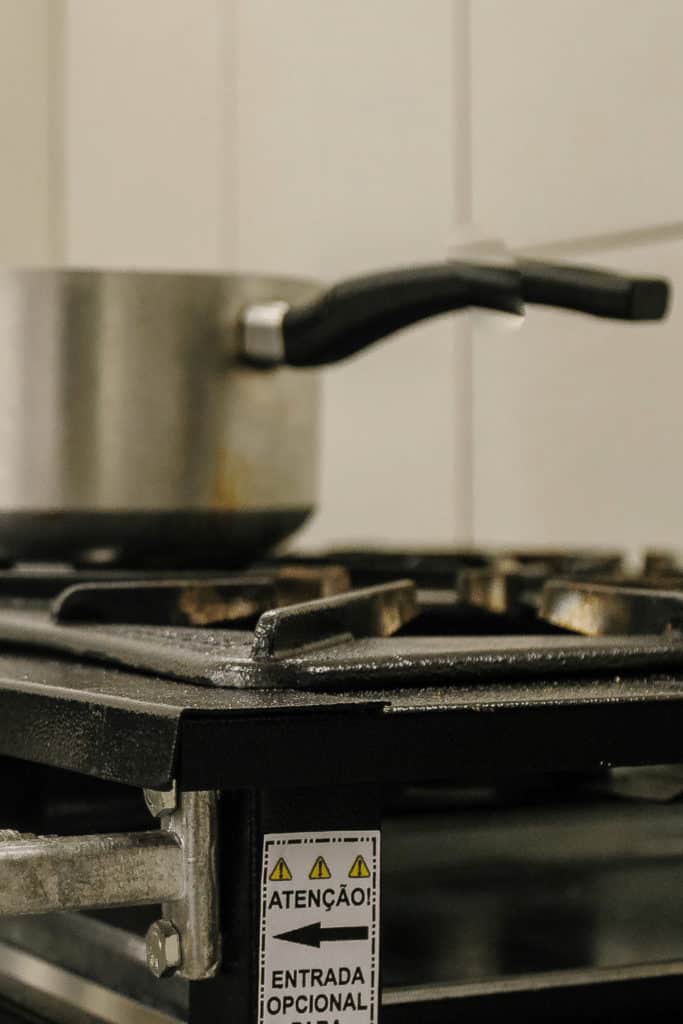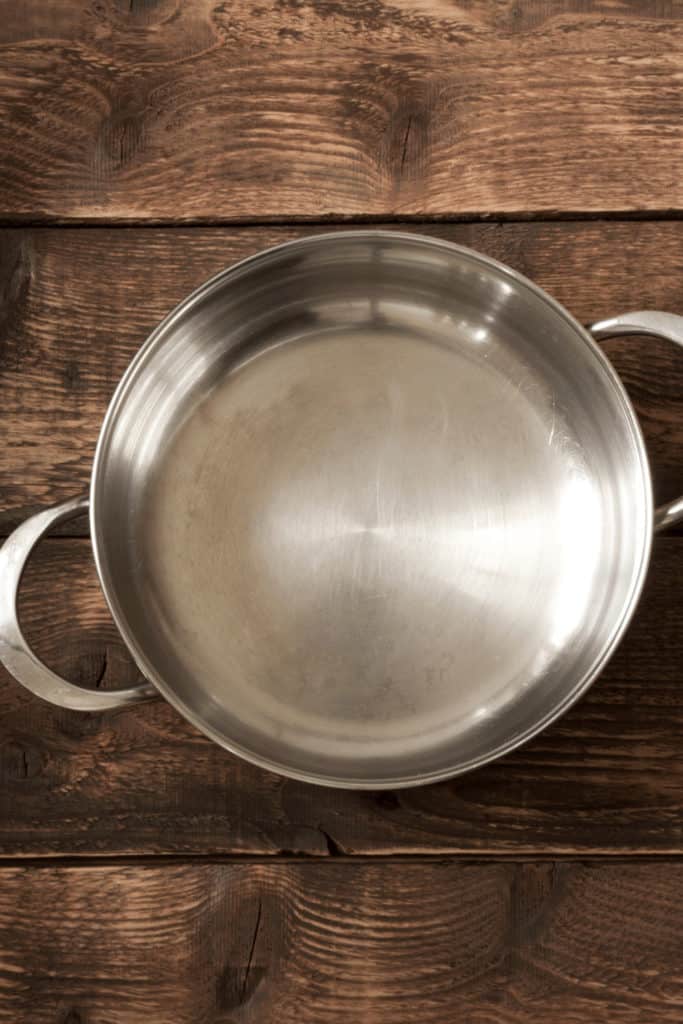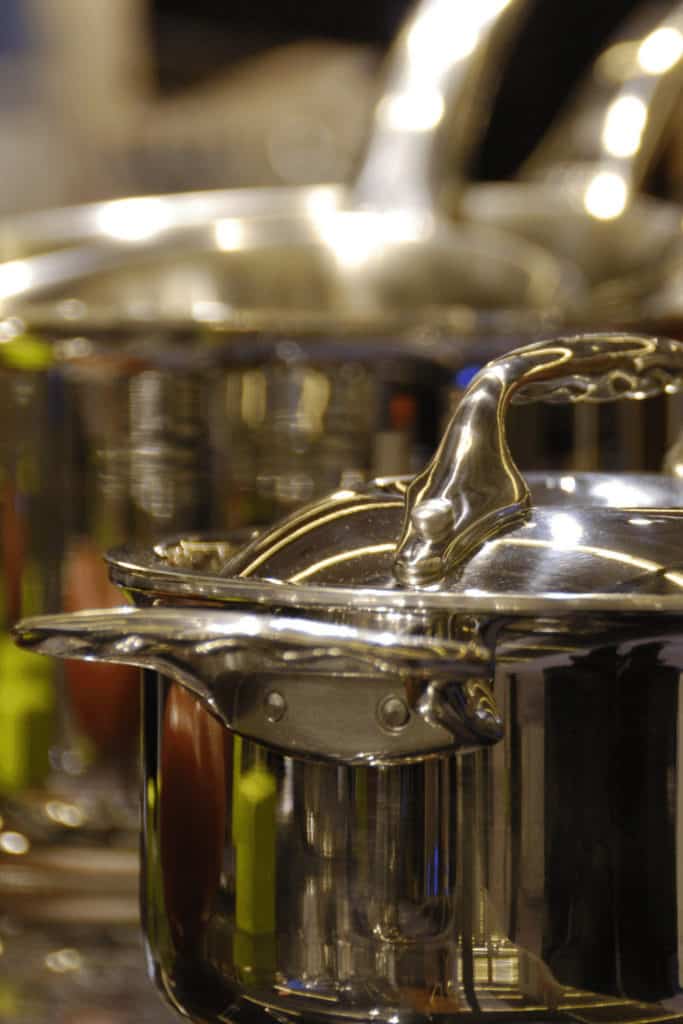Because I’m distracted, I have quite forgotten that I’ve had the small saucepan of gravy simmering away for the past twenty minutes.
Mindlessly, I reach out for the stainless steel saucepan, and with a little yelp of pain, I temporarily achieve Zen as I am instantly yanked back into the here and now.
Irritated by both my carelessness and life itself, this time, I ruminate on why saucepan handles feel they have to be so dang hot.
Why does the handle of a saucepan get hot when it is on the stove?
The handle of a saucepan gets hot when it is on the stove through a process scientists call ‘conduction.’ It is the same process that heats the grip of an iron poker left with its tip in a fire.

How heat travels from one place to another
Heat travels three ways through a system; radiation, convection, and conduction.
To understand how these work, imagine a pot of water on an electric stove turned up high to bring the water to a boil.
With that image in mind, let’s see how the pot’s handle eventually gets hot.
Radiation

Radiation transfers something from a central place (we say ‘radiated outward’).
Where heat is concerned, radiation transfers heat from a central location.
In the case of our pot of water on an electric ring, that central place is the electric ring that is producing the heat.
If you don’t know much about the physics of heat, you might think that the pot of water is warming up because it is touching the red-hot electric heating element.
If so, although you’re not wrong, you’re not entirely correct either.
Actually, the pot of water would still reach a boil even if the pot wasn’t in direct contact with the heating element!
Radiation works through electromagnetic waves. These are waves made of electrical and magnetic parts, which is why they’re called electromagnetic waves.
They exist across a wide spectrum, from longwave (think of your long wave radio) to short wave gamma rays (the super dangerous waves which give people cancer in real life but awesome superpowers in comic books).
In between these extremes are infrared rays (which cause heating) and visible rays that we normally call ‘light.’
Radiation acts at a distance
Like radio waves and light, there is no need to be in contact with the source of the electromagnetic waves to be affected by them.
The same is true of infrared rays.
Our pot of water will still come to a boil even if the pot is raised above the heating element or even to one side of it.
Of course, the further away from the heating element, the farther the infrared electromagnetic rays have to travel, the weaker they will be when they reach the pot, and the longer it will take to boil.
Convection

Another method of transferring heat is convection, which is how heat travels through liquids.
For example, in the case of our pot of water, the water at the bottom of the pot gets hot first (duh, it’s the water closest to the radiation from the heating element).
Now the thing is, a hot liquid is always lighter than a cold one, so the hot water at the bottom of the pot rises to the top.
On its way, it gives off part of its heat to the rest of the water.
When hot water from the bottom of the pot reaches the top, it is already cooler than it was at the bottom because it has imparted (given) some of its heat to other water.
At the top, because of its contact with air, it loses even more heat, becomes relatively ‘cold’, and starts to sink back to the bottom of the pot.
On its way back down, it meets water newly made hot going up! This coming and going is called ‘convection current.’
You see it best when the water is simmering, just before it starts to boil.
Water boils because the water temperature throughout the pot has reached 212°F.
The roiling you see in a boiling pot of water is the liquid fighting to stay on top while losing to hotter, more energetic water just coming from the bottom.
Water doesn’t have a chance to cool down much before it is forced to return to the bottom.
Conduction

The third way that heat travels from one place to another is ‘conduction,’ which is of particular interest to us.
Heat conduction happens when heat energy is transferred from one place to another.
When a particle gets hot, it charges around, trying to get rid of the heat by passing it onto others. Particles in a liquid state find it very easy to do this.

In the case of solids, however, particles can’t move around as easily as they can in liquid and gaseous forms, so they have to stay where they are.
However, they still pass their extra heat to others nearby by transferring heat energy.
Think of a line of firefighters all passing buckets of water from one to the other in a desperate attempt to put out the fire, only this time, it’s in reverse, and they are passing buckets of heat away from the fire.
Back to our pot of water… now that the water has reached boiling point, the only place more heat can go is through conduction into the pot itself, and for the pot, the only place the heat in the pot can go is into the handle… which is why the handle of the pot gets hot.
Frequently Asked Questions About Why Does The Handle of a Saucepan Get Hot When it is on the Stove
Why give metal handles to pots, pans, and saucepans?
This is not as stupid as it might seem at first. Metals are durable materials, and they will not crack, buckle, or burn like other materials when exposed to relentless heat. However, they are excellent conductors of heat, which is why it is so easy for folks to burn their hands on them.
Why do handles on smaller saucepans get hotter faster than handles on larger ones?
There is less ‘handle’ to heat in a smaller saucepan than in a larger one. It’s like heating one egg or heating two dozen eggs. Obviously, one egg will get hotter, quicker than two dozen, when exposed to the same amount of heat.
Afterword: Why does the handle of a saucepan get hot when it is on the stove?
When a saucepan is on a heating element or burner, radiation transfers heat from the element or burner into the food in the saucepan.
Convection distributes heat all over the saucepan, and conduction heats the body of the saucepan first, then its handle.
A saucepan’s handle gets hot when it’s on a stove because of heat conduction from the body of the saucepan.

